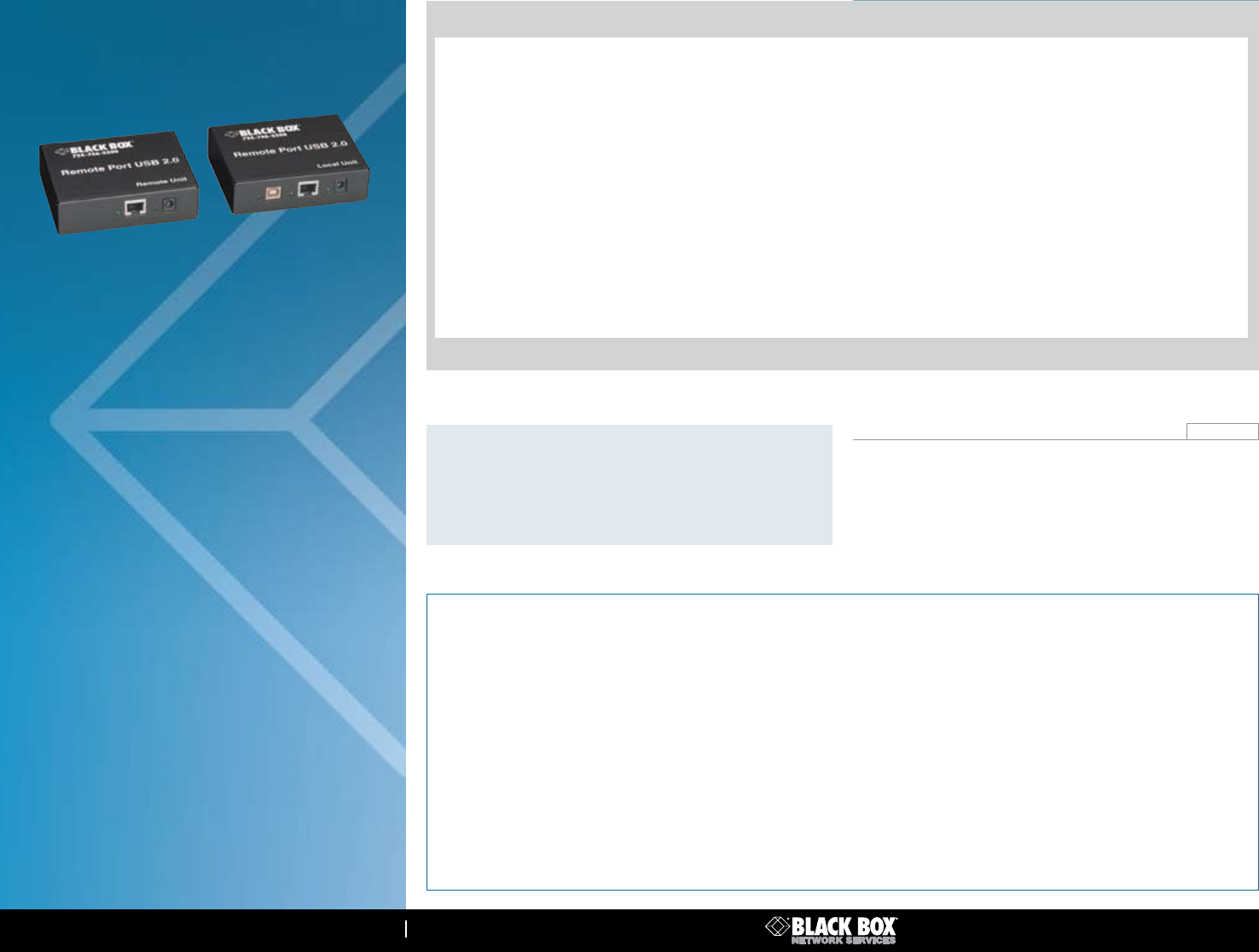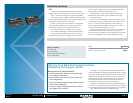
724-746-5500 blackbox.com
BL A C K B O X
®
3 of 3
03/24/2010
#26715
Item Code
Remote Port USB 2.0
→
CAT5 Extender
IC247A
USB 2.0
→
CAT5 4-Port Extender
IC248A
What’s included
✦ (1) local unit
✦ (1) remote unit
✦ (2) 110-VAC power adapters
✦ (1) 2-m USB cable
Recognize any of these situations?
• You wait more than 30 minutes to get through
to a vendor’s tech support.
• The so-called “tech” can’t help you or gives you
the wrong answer.
• You don’t have a purchase order number and the
tech refuses to help you.
• It’s 9 p.m. and you need help, but your vendor’s
tech support line is closed.
According to a survey by Data Communi cations magazine, 90%
of network managers surveyed say that getting the technical support
they need is extremely important when choosing a vendor. But even
though network managers pay anywhere from 10 to 20% of their
overall purchase price for a basic service and support contract, the
technical support and service they receive falls far short of their
expectations—and certainly isn’t worth what they paid.
At Black Box, we guarantee the best value and the best support.
You can even consult our Technical Support Experts before you buy if
you need help selecting just the right component for your application.
Don’t waste time and money—call Black Box today.
Why Buy From Black Box? Exceptional Value.
Exceptional Tech Support. Period.
IC248A
USB.
The Universal Serial Bus (USB) hardware (plug-and-play)
standard makes connecting peripherals to your computer easy.
USB 1.1, introduced in 1995, is the original USB standard.
It has two data rates: 12 Mbps for devices such as disk drives
that need high-speed throughput and 1.5 Mbps for devices such
as joysticks that need much lower bandwidth.
In 2002, a newer specification, USB 2.0, or Hi-Speed USB
2.0, gained wide acceptance in the industry. This version is
both forward- and backward-compatible with USB 1.1.
It increases the speed of the peripheral to PC connection
from 12 Mbps to 480 Mbps, or 40 times faster than USB 1.1!
This increase in bandwidth enhances the use of external
peripherals that require high throughput, such as CD/DVD
burners, scanners, digital cameras, video equipment, and more.
USB 2.0 supports demanding applications, such as
Web publishing, in which multiple high-speed devices run
simultaneously. USB 2.0 also supports Windows XP through
a Windows update.
An even newer USB standard, USB On-The-Go (OTG), is also
in development. USB OTG enables devices other than a PC to act
as a host. It enables portable equipment—such as PDAs, cell
phones, digital cameras, and digital music players—to connect
to each other without the need for a PC host.
USB 2.0 specifies three types of connectors: the A connect-or,
the B connector, and the Mini B connector. A fourth type of
connector, the Mini A (used for smaller peripherals such as mobile
phones), was developed as part of the USB OTG specification.
Technically Speaking





